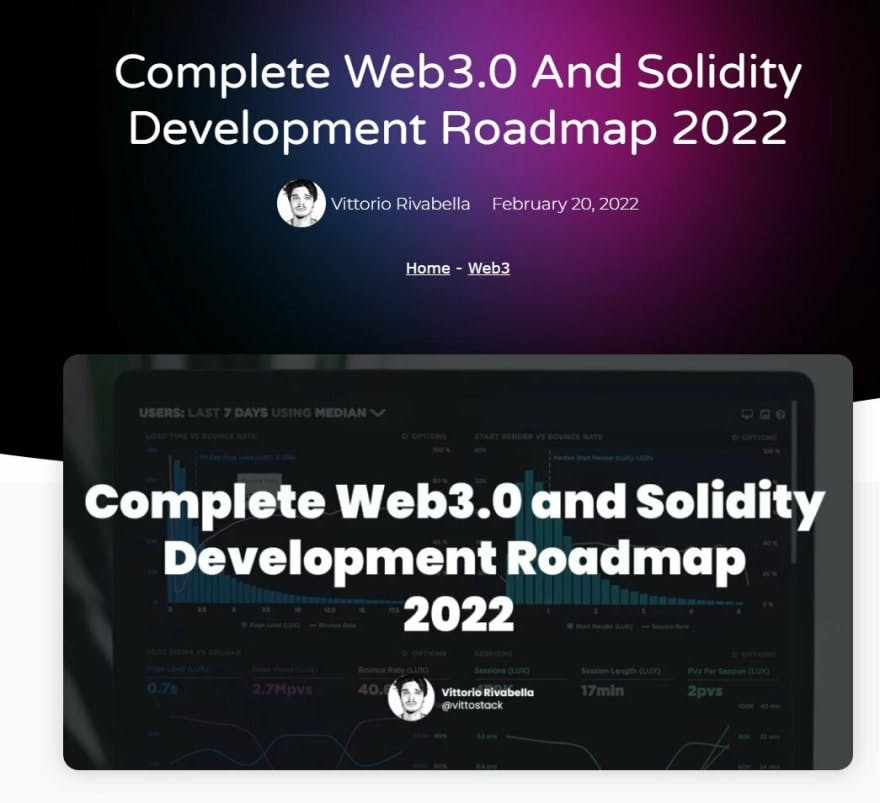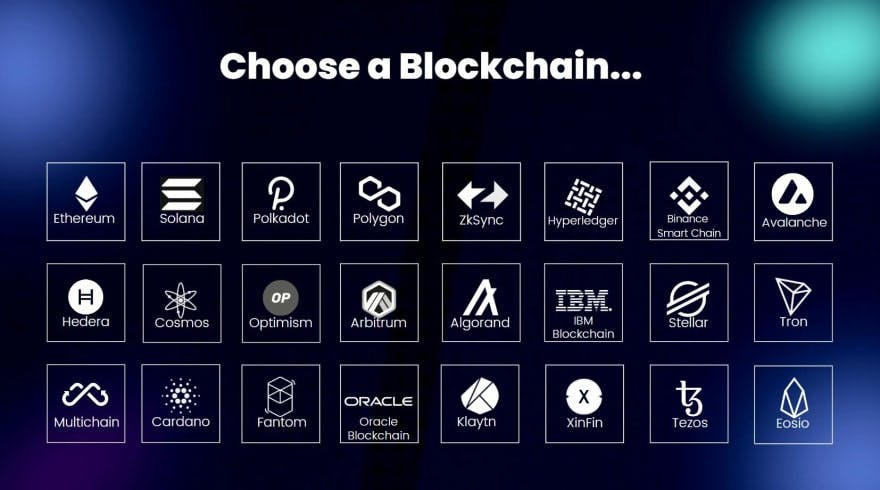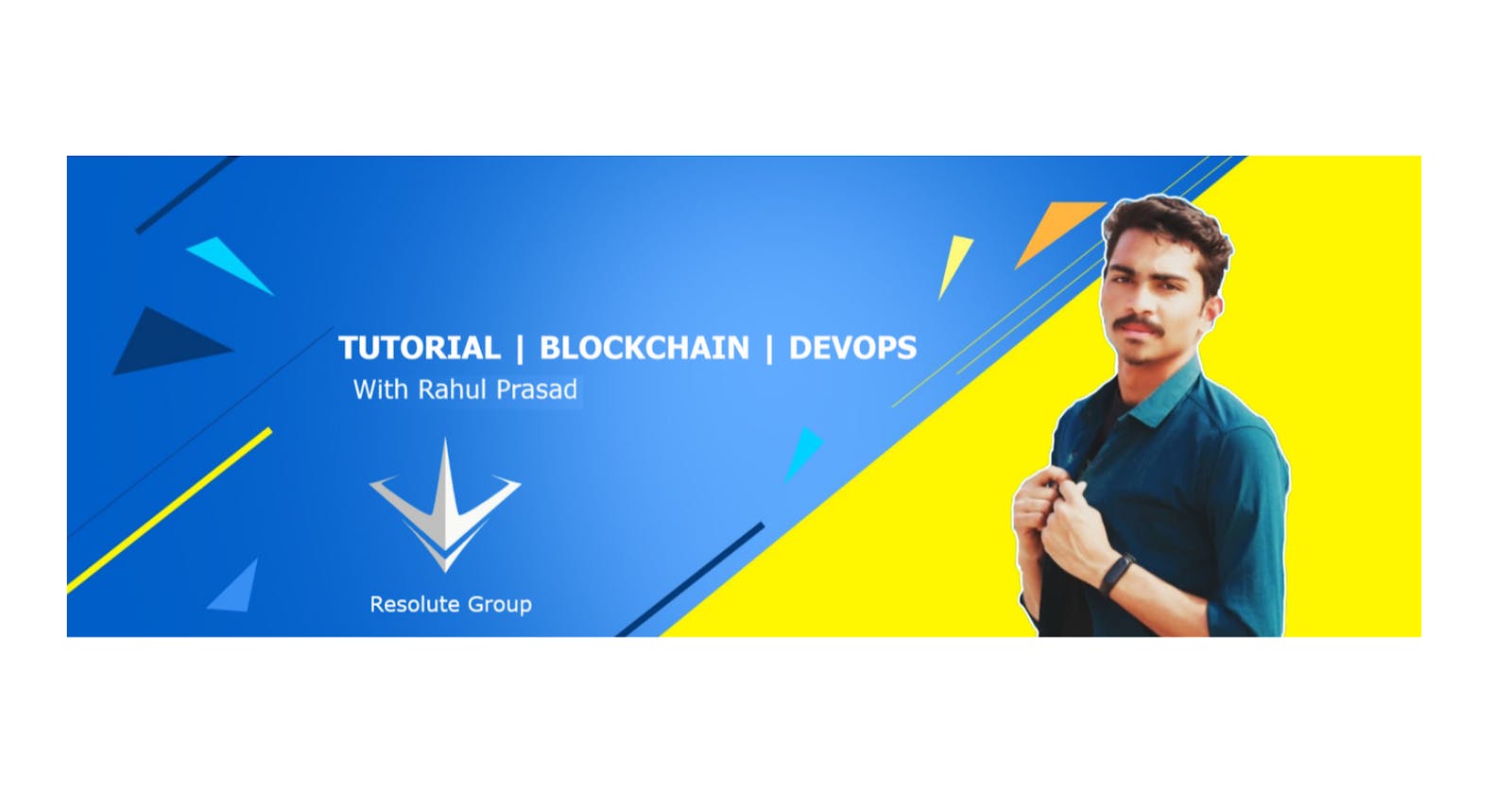Table of contents
- Where to start ?
- Roadmap
- Intro Article
- Blockchain Fundamentals
- Choose a Blockchain
- Ethereum Concepts
- Ethereum Concepts (Advanced)
- Choose a Language
- Solidity (a blazing fast intro)
- Solidity Videos
- Solidity tools
- Use a framework
- Connect the Dapp to Frontend
- Decentralized storage
- Mid-level tools
- Build projects
- Join a Community!
- Thank you!
Hi, I am Rahul Prasad, and I share daily content about Web3 (mainly on Twitter and LinkedIn) In this article, I will summarize the steps you can take in order to learn Web3.
Where to start ?
When we want to start something new, we need some direction just to don't get stuck at the very beginning.
But we all are different and we have different ways of learning.
This article is based on my very personal experience in learning Web3.
Roadmap
I don't like Roadmaps! But reading at least one can help us to have an idea of what we are expecting and to check if we are missing something.
Don't get a Roadmap as a bible to trust and to follow blindly 100%, but as a reminder if you are on the right track.
There are many roadmaps, and I am working on one.
For now I feel recommending the following one:
Complete Web3.0 and Solidity Development Roadmap 2022

Intro Article
What about the very first piece of content? I don't suggest jumping straight into code but hold our hands for a while and start by getting a general idea of what is Web3.
This article byNader Dabit on freecodecamp is a good one to start.

Blockchain Fundamentals
Starting with the basics concepts you can't really be wrong.
I will link specific resources for each of them, but don't take this as the only one you have to watch to understand the concepts. Take your time because all the time spent here ios time saved later!
Just remember that the Fundamentals are fundamental, so don't skip this part.
- Web1, Web2, Web3: A good article about the differences between web1, Web2, and Web3
- What is a Blockchain: an enlightening video to understand the basic of the Blockchain.
- Distributed Ledger: It's the consensus of replicated, shared, and synchronized digital data that is geographically spread across many sites, countries, or institutions.
- Cryptocurrencies basics: An intro for an introduction to cryptocurrencies.
- Smart Contracts: Smart Contracts explained simply, in a 4-minutes video.
- Crypto-Wallets: An introduction to crypto wallets, connected to the concept of authentication in Web3.
- Block Explorers: A block explorer is an online tool that enables you to search for real-time and historical information about a blockchain, including data related to blocks, transactions, addresses, and more.
- Blockchain Oracles: A blockchain oracle is a service that connects smart contracts with the outside world, to feed information from (but also to) the world.
- NFT Intro: NFTs explained in 4 minutes. -DAO Intro: A DAO, or a Decentralized Autonomous Organization, is a company set up to run by code on the blockchain.
- Dapp Intro: dApps, or Decentralized Applications are apps that run using blockchain technology.
Choose a Blockchain
Each Blockchain is an ecosystem, with pros/cons.
Choose a Blockchain to understand concepts and apply them, like deciding to use Node.js to build some API.
I suggest to choose Ethereum for many reasons, the main one is that there is more material about it online.

Ethereum Concepts
Once you choose the Blockchain you can start learning the fundamental of the specific Blockchain. Some concepts overlaps among the blockchains, but they can be slightly different for each of them.
For Ethereum:
Ethereum Concepts (Advanced)
If you want to dive a bit deeper, here are some articles and concepts you can look for:
Choose a Language
- Solidity: good for JavaScript/C++/Python Developers.
- Vyper: good for Python Developers.
- Rust: good choice if you chose Solana as blockchain.
I suggest Solidity because it's the most popular one.
Solidity (a blazing fast intro)
- It's an object-oriented, high-level language for implementing Smart Contracts.
- It's statically typed.
- It's a curly-bracket language designed to target the Ethereum Virtual Machine.
- It supports: inheritance, libraries, and complex user-defined types.
Solidity Videos
Some good YouTube channels to know more about Solidity:
- Learn Blockchain, Solidity, and Full Stack Web3 Development with JavaScript – 32-Hour Course: Patrick Collins Javascript Version on freeCodecamp
- Solidity, Blockchain, and Smart Contract Course – Beginner to Expert Python Tutorial: Patrick Collins Python version
- Dapp University: Gregory (Dapp University)
- Smart Contract Programmer: A good channel with videos straight to the point.
Solidity tools
- Remix IDE: A very good to get started without setting up a local environment)
- Solidity Docs: Solidity Official documentation
- Solidity Cheatsheet

Use a framework
Once you get the basics, you can dive deep using these tools and working in a local environment.
- Metamask: MetaMask is a software cryptocurrency wallet used to interact with the Ethereum blockchain.
- Vs Code Solidity Extension: VS Code extensions that integrates with the Nethereum code generator to create Contract integration definitions.
- Truffle: Truffle is a development environment, asset pipeline, and testing framework for developing smart contracts.
- Hardhat: Hardhat is an Ethereum development environment. Compile your contracts and run them on a development network.
- Brownie: Brownie is a Python-based development and testing framework for smart contracts.
- Foundry: Foundry is a fast, portable and modular toolkit for Ethereum application development written in Rust.
Connect the Dapp to Frontend
Are you a front-end developer? GOOD!
For once, you don't have to learn a new framework, just use a library to interact with the blockchain!
You can use any frontend Framework (React, Vue, Angular, Svelte...)
Use:
- Web3.js: web3.js is a collection of libraries that allow you to interact with a local or remote ethereum node using HTTP, IPC or WebSocket.
- Ether.js: The ethers.js library aims to be a complete and compact library for interacting with the Ethereum Blockchain and its ecosystem.
Decentralized storage
Here are some examples of storage you can use to store your data on the blockchain (something similar to databases).
- IPFS: The InterPlanetary File System is a protocol, hypermedia and file sharing peer-to-peer network for storing and sharing data in a distributed file system.
- Arweave: Arweave is a data storage protocol. It's built on a technology called "blockweave".
- FileCoin: Filecoin is an open-source, public cryptocurrency and digital payment system intended to be a blockchain-based cooperative digital storage and data retrieval method. It builds on top of IPFS, and it allows to rent unused hard drive space.
They are a p2p network of user-operators who hold a portion of the overall data.
Mid-level tools
Most of them are not complicated. To be honest, they simplify the process, but it's better to discover them after understanding the basics.
- Testing Tools: Waffle, Ganache
- OpenZeppelin
- WalletConnect: WalletConnect is an open source protocol for connecting decentralised applications to mobile wallets with QR code scanning or deep linking.
- Chainlink: Chainlink is a decentralized oracle networks provide tamper-proof inputs, outputs, and computations to support advanced smart contracts on any blockchain.
- TheGraph: The Graph is an indexing protocol for organizing blockchain data and making it easily accessible with GraphQL.
Build projects
Build projects! I leave a couple of places where you can get inspiration for building projects, but there are way more on YouTube
- Moralis projects
- Alchemy - Road to Web3
Join a Community!
Last but not least, joining a community can be super useful.
Good examples:
- LearnWeb3 -Developer_Dao If you are a Content Creator, You can also join 4C, the Cool Community of Content Creators, the community I founded.
We have a specific section for Web3.
If you are still reading, just leave a feedback.
Thank you!
Thanks for reading! You can find Rahul here
